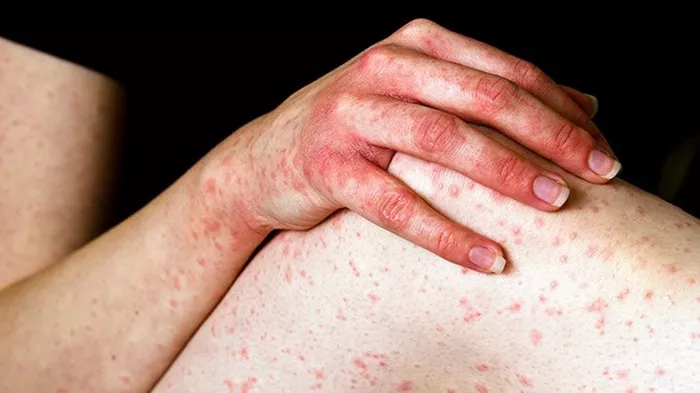Insect bites and stings are common occurrences, often resulting in minor discomfort. However, for a subset of individuals, these encounters can trigger severe allergic reactions, including anaphylaxis—a potentially life-threatening condition. This article explores which insect bites are most likely to cause anaphylaxis, the mechanisms behind these reactions, and how to recognize and respond to anaphylactic episodes.
What is Anaphylaxis?
Anaphylaxis is a severe, systemic allergic reaction that occurs rapidly and can be fatal if not treated promptly. It involves multiple organ systems and can lead to symptoms such as difficulty breathing, swelling, lowered blood pressure, and loss of consciousness. Anaphylaxis requires immediate medical intervention, typically with an injection of epinephrine.
Mechanisms of Anaphylaxis
Anaphylaxis occurs when the immune system overreacts to an allergen, releasing a flood of chemicals that can cause shock. This overreaction can be triggered by various substances, including foods, medications, and insect venom. The primary immune players in anaphylaxis are Immunoglobulin E (IgE) antibodies, which bind to the allergen and activate mast cells and basophils. These cells then release histamines and other chemicals, leading to the symptoms of anaphylaxis.
Insect Bites and Stings Known to Cause Anaphylaxis
1. Bees
Honeybees
Honeybee stings are a common cause of allergic reactions, including anaphylaxis. The venom contains proteins that affect skin cells and the immune system, leading to pain and swelling at the site of the sting. In sensitized individuals, these proteins can trigger an IgE-mediated response, resulting in anaphylaxis.
Bumblebees
Though less aggressive than honeybees, bumblebees can also cause severe allergic reactions. The venom of bumblebees is similar to that of honeybees, containing compounds that can induce anaphylaxis in susceptible individuals.
2. Wasps
Yellow Jackets
Yellow jackets are among the most aggressive wasps and are notorious for their painful stings. Their venom contains potent allergens that can cause severe allergic reactions, including anaphylaxis. Yellow jackets can sting multiple times, injecting venom with each sting, increasing the likelihood of a severe reaction.
Hornets
Hornet stings are another significant cause of anaphylactic reactions. Hornet venom contains a mix of toxins that can cause intense pain and swelling. For those with venom allergies, a single sting can precipitate anaphylaxis.
Paper Wasps
Paper wasps, known for their distinctive nests, also pose a threat to individuals with venom allergies. Their stings can result in severe allergic reactions and anaphylaxis due to the allergens present in their venom.
3. Ants
Fire Ants
Fire ants are infamous for their painful stings, which can cause intense burning sensations and pustules. For individuals allergic to fire ant venom, stings can trigger anaphylaxis. Fire ants can attach to the skin with their mandibles and inject venom multiple times, significantly increasing the risk of a severe allergic reaction.
Harvester Ants
Harvester ants, though less common, can also cause anaphylaxis in sensitive individuals. Their venom contains alkaloids and proteins that can provoke strong allergic reactions.
4. Mosquitoes
While mosquito bites are usually associated with itching and minor irritation, they can cause anaphylaxis in rare cases. The saliva of mosquitoes contains proteins that can trigger severe allergic responses in highly sensitized individuals.
5. Ticks
Certain species of ticks can cause severe allergic reactions and anaphylaxis. The Lone Star tick, in particular, has been associated with a unique allergy to alpha-gal, a carbohydrate found in red meat, which can cause delayed anaphylactic reactions.
Risk Factors for Anaphylaxis from Insect Bites
Previous Allergic Reactions
Individuals who have previously experienced allergic reactions to insect stings are at a higher risk of anaphylaxis. A history of severe reactions indicates a sensitized immune system, which can respond more aggressively upon subsequent stings.
Atopy
People with atopy—a genetic predisposition to allergic diseases such as asthma, eczema, and hay fever—are more likely to develop anaphylactic reactions to insect stings.
Multiple Stings
Multiple stings can increase the amount of venom injected into the body, heightening the risk of a severe allergic reaction. This is particularly relevant for aggressive insects like yellow jackets and fire ants, which can sting multiple times.
Chronic Diseases
Individuals with certain chronic diseases, such as cardiovascular disease or mastocytosis (a condition involving excessive mast cells), may have an increased risk of anaphylaxis due to their already heightened inflammatory responses.
Symptoms of Anaphylaxis
Initial Symptoms
Anaphylaxis often begins with mild symptoms that can quickly escalate. Early signs may include itching, hives, and swelling, particularly in areas distant from the sting site.
Respiratory Symptoms
As the reaction progresses, respiratory symptoms can develop, such as difficulty breathing, wheezing, and tightness in the chest. These symptoms result from the constriction of airways and swelling of the throat and tongue.
See Also: Is Rejuran S Permanent?
Cardiovascular Symptoms
Anaphylaxis can cause a rapid drop in blood pressure, leading to dizziness, fainting, and shock. The heart may beat irregularly or rapidly as it struggles to maintain adequate blood flow.
Gastrointestinal Symptoms
Nausea, vomiting, diarrhea, and abdominal pain can occur during anaphylaxis, reflecting the systemic nature of the reaction.
Neurological Symptoms
Severe anaphylaxis can affect the nervous system, leading to confusion, agitation, and loss of consciousness.
Diagnosing Anaphylaxis
Clinical Evaluation
Anaphylaxis is primarily diagnosed based on clinical evaluation. Healthcare providers assess symptoms and their progression, focusing on the rapid onset and involvement of multiple organ systems.
Allergy Testing
Allergy testing, including skin tests and blood tests for specific IgE antibodies, can help identify the insect venoms that trigger anaphylaxis. This information is crucial for managing and preventing future reactions.
Management and Treatment
Immediate Response
The cornerstone of anaphylaxis treatment is the prompt administration of epinephrine. Epinephrine auto-injectors (e.g., EpiPen) are prescribed to individuals at risk and should be carried at all times. Administration should be followed by immediate medical attention, as symptoms can recur or escalate.
Emergency Care
In a medical setting, additional treatments for anaphylaxis may include antihistamines, corticosteroids, and bronchodilators to manage symptoms and prevent recurrence. Intravenous fluids and vasopressors may be necessary to stabilize blood pressure.
Long-Term Management
Avoidance
Avoiding known allergens is critical for preventing anaphylaxis. Individuals should take precautions to minimize exposure to stinging insects, such as wearing protective clothing and using insect repellents.
Immunotherapy
Venom immunotherapy (VIT) is an effective long-term treatment for individuals with insect venom allergies. This therapy involves the regular administration of gradually increasing doses of the venom, desensitizing the immune system over time and significantly reducing the risk of severe reactions.
Education and Preparedness
Educating patients about anaphylaxis and its management is vital. This includes teaching the correct use of epinephrine auto-injectors, recognizing early symptoms, and having an action plan for emergencies.
Prevention Strategies
Environmental Control
Controlling the environment to reduce the presence of stinging insects can help prevent allergic reactions. This includes measures like removing nests, keeping food covered outdoors, and avoiding areas known to harbor aggressive insects.
Personal Protection
Wearing long sleeves, pants, and closed shoes can reduce the risk of stings. Using insect repellents and staying away from sweet-smelling perfumes and bright clothing can also help deter insects.
Professional Pest Control
In areas with high populations of stinging insects, professional pest control services can help manage and reduce insect numbers, creating a safer environment.
Conclusion
Understanding the risks and mechanisms of insect bite-induced anaphylaxis is essential for effective management and prevention. By recognizing the insects most likely to cause severe allergic reactions, identifying symptoms early, and employing appropriate treatment and prevention strategies, individuals at risk can lead safer, healthier lives. With proper education, preparedness, and medical support, the dangers of anaphylaxis from insect bites can be significantly mitigated.
[inline_related_posts title=”You Might Be Interested In” title_align=”left” style=”list” number=”6″ align=”none” ids=”10212,10137,10047″ by=”categories” orderby=”rand” order=”DESC” hide_thumb=”no” thumb_right=”no” views=”no” date=”yes” grid_columns=”2″ post_type=”” tax=””]


































